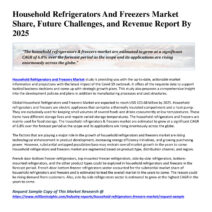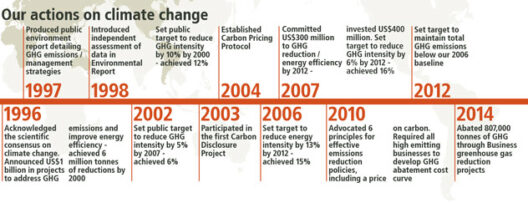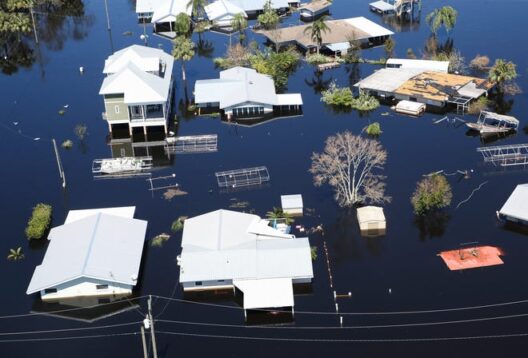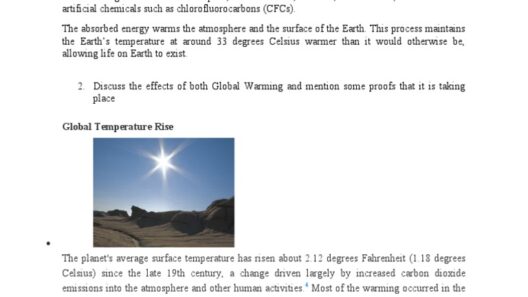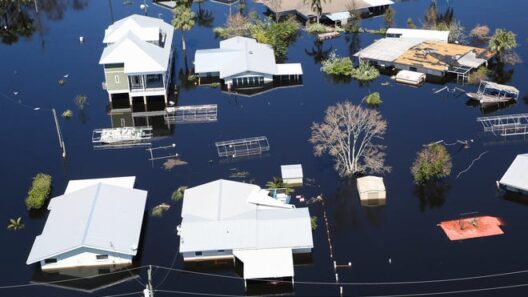Global warming represents one of the most formidable challenges of our time, a crisis rooted in the intricate interplay between human activity and natural processes on Earth. Understanding what contributes to this climate emergency is crucial for igniting collective action and fostering awareness of our environmental responsibilities. This article delves into the major drivers of global warming, dissecting them with precision and clarity.
Identifying these factors opens a Pandora’s box of critical insights and encourages us to rethink our relationship with the planet. The ensuing discussion is not just a grim catalog of issues but a beacon of hope, urging innovative solutions and a paradigm shift in our approach to sustainability.
Deforestation: The Silent Assassin of Our Atmosphere
One of the primary culprits in global warming is deforestation, the mass removal of trees that play an indispensable role in the carbon cycle. Forests act as carbon sinks, absorbing carbon dioxide—a potent greenhouse gas—from the atmosphere. When we strip these natural marvels, we not only release stored carbon but also diminish the planet’s capacity to sequester future emissions.
The ramifications of deforestation extend beyond carbon release. It disrupts biodiversity, leading to the extinction of countless species and disturbing ecosystems that have evolved over millennia. As habitats vanish, so does the delicate balance of life, resulting in long-term consequences for both human and non-human entities alike. Promoting afforestation and sustainable land management practices can serve as a bulwark against this escalating crisis.
Burning Fossil Fuels: The Carbon Conundrum
Fossil fuels—coal, oil, and natural gas—have propelled industrialization, but their combustion is one of the primary sources of carbon emissions. Transportation, electricity generation, and industrial processes collectively produce copious amounts of carbon dioxide, contributing significantly to the greenhouse effect, which traps heat in the atmosphere.
What is perhaps more alarming is the projected upsurge in fossil fuel consumption, particularly in developing nations yearning for economic growth. This presents a paradox: the same resources that have powered economies are now imperiling their future sustainability. Transitioning to renewable energy sources, such as wind, solar, and geothermal power, is no longer an option but an imperative. This shift not only curtails emissions but also fosters energy independence and innovation.
Agricultural Practices: The Climate Footprint of Food Production
The modern food system is another significant contributor to global warming, largely driven by industrial agriculture’s reliance on chemical fertilizers and intensive animal farming. These practices release nitrous oxide and methane, two greenhouse gases with a far greater warming potential than carbon dioxide. The expansive use of nitrogen-based fertilizers not only leads to soil degradation but also causes runoff that pollutes waterways, posing threats to aquatic ecosystems.
Moreover, livestock farming is a major source of methane emissions, emitted during digestion and from manure management. As global populations rise and diets change, especially in developing regions, these emissions are expected to surge unless alternative farming techniques and sustainable diets are adopted. Promoting plant-based diets and agroecological practices could significantly mitigate the agricultural sector’s impact on climate change.
Industrial Processes: The Overlooked Emissions
While transportation and energy generation receive the lion’s share of attention in discussions about climate change, industrial processes are formidable adversaries as well. Manufacturing goods—from cement and steel to electronics—produces vast amounts of carbon emissions. The chemical reactions involved in production often emit greenhouse gases directly into the atmosphere. Additionally, some industries, such as cement production, generate emissions that are inherently tied to chemical transformations required in producing their primary goods.
Enhanced efficiency measures, recycling, and the adoption of cleaner technologies are vital for curbing emissions in the industrial sector. Innovations in green chemistry and sustainable manufacturing practices can deliver significant reductions in the industrial climate footprint. The time is ripe for industries to embrace sustainability as part of their core strategies rather than as an afterthought.
Consumer Behavior: The Ripple Effect of Choices
Each choice we make as consumers resonates throughout the economy and the environment. The demand for fast fashion, single-use plastics, and heavily packaged goods contributes to vast environmental degradation. The production and disposal of these items not only generate greenhouse gases but also burden landfills and oceans, threatening both terrestrial and marine ecosystems.
Educating consumers about the environmental impact of their choices can foster more sustainable consumption habits. From supporting local businesses to advocating for minimalistic lifestyles, consumers wield considerable influence. A shift toward more deliberate purchasing choices can create a groundswell of change, nurturing a culture of sustainability and collective responsibility.
Engaging in Dialogue: A Path Forward
Confronting the specter of global warming demands a multidimensional approach that integrates policy reform, technological innovation, and grassroots activism. Confronting the intertwined causes of climate change requires collaboration—across borders, industries, and generations.
This crucial dialogue can pivot humanity towards a sustainable future, transforming the climate crisis from an insurmountable obstacle into an opportunity for growth and change. By recognizing our interconnectedness with the planet, we can inspire the collective action needed to curtail impending climate catastrophes.
In summary, the major contributors to global warming—ranging from deforestation and fossil fuel reliance to inefficient agricultural practices and consumer behaviors—serve as vital indicators for the urgent transformation required. Addressing these issues not only promises to mitigate climate change but also fosters a more sustainable and equitable world, proving that the path to a healthier planet lies within our collective grasp.

